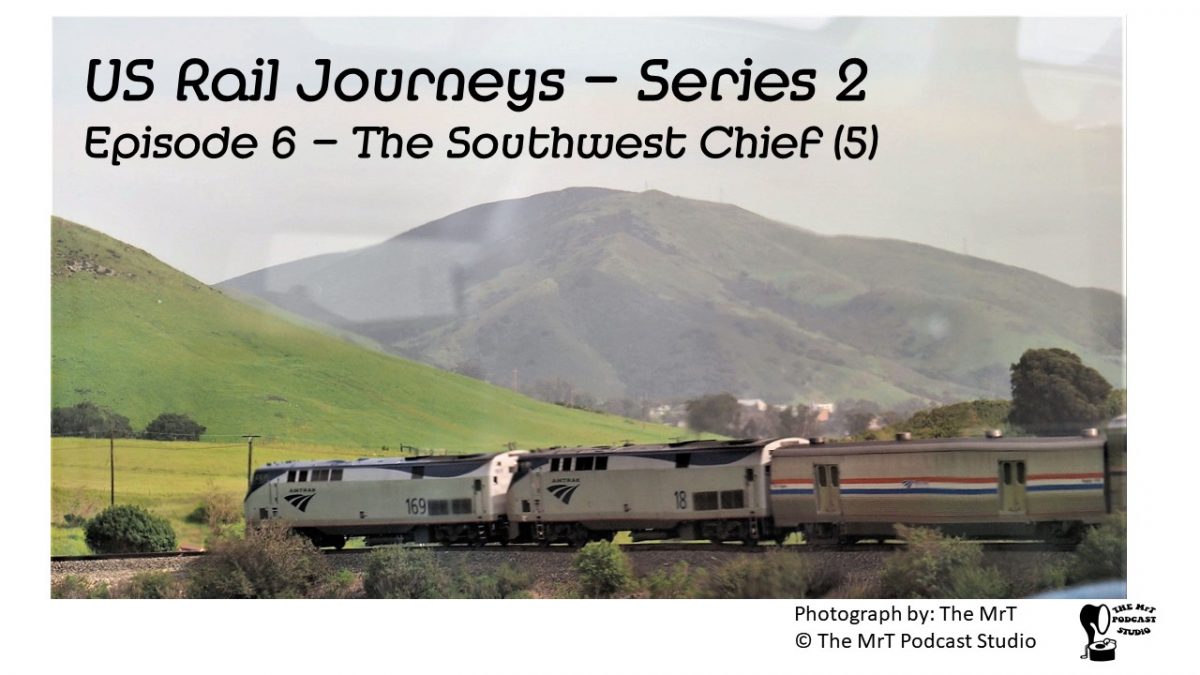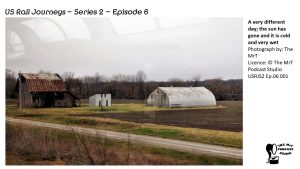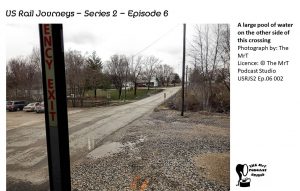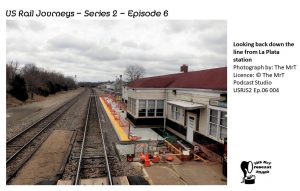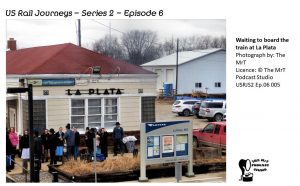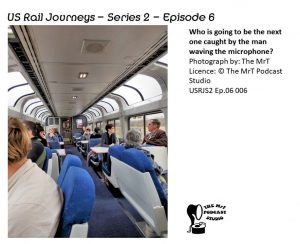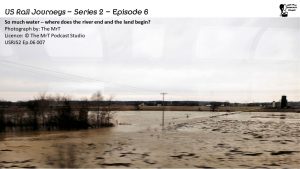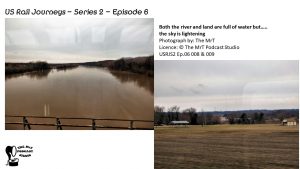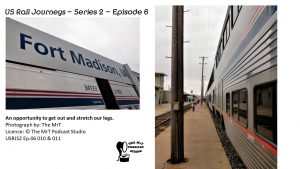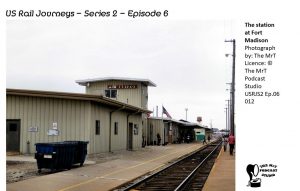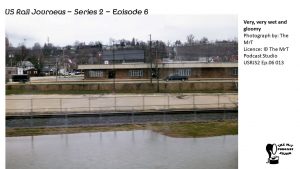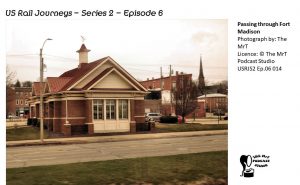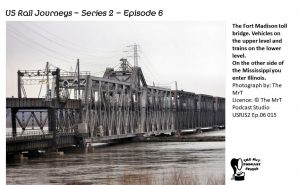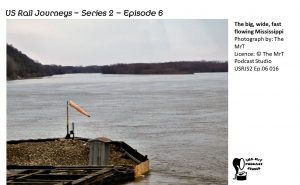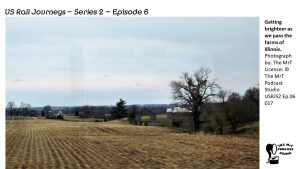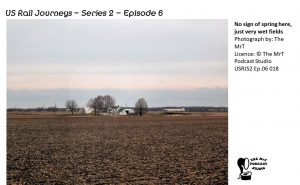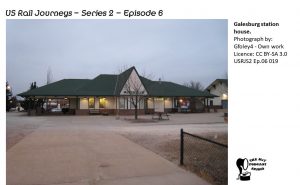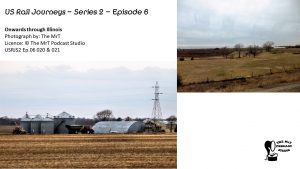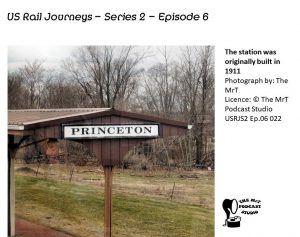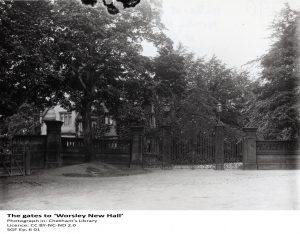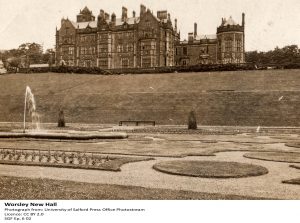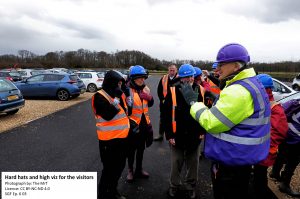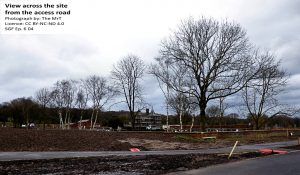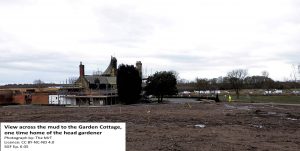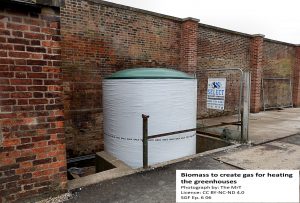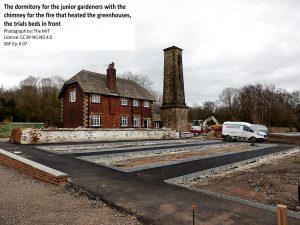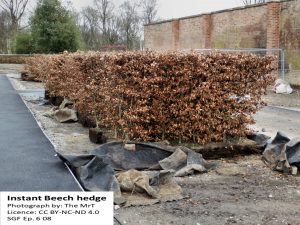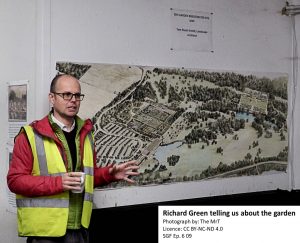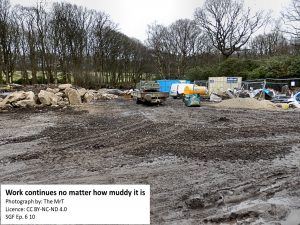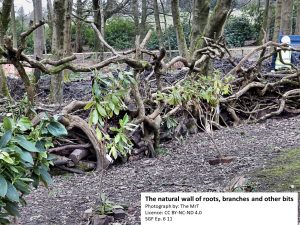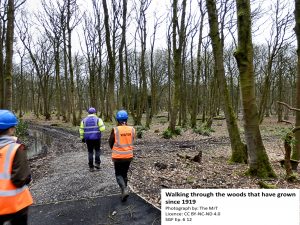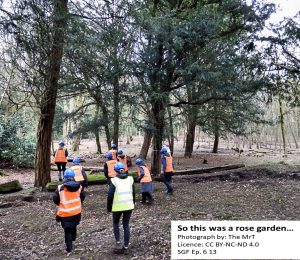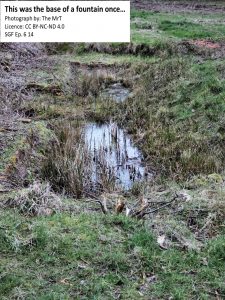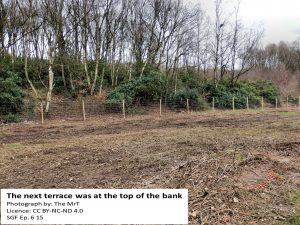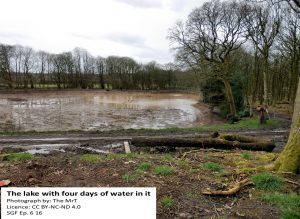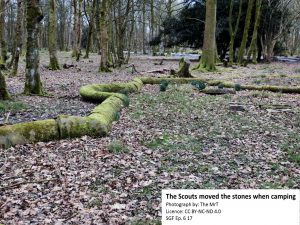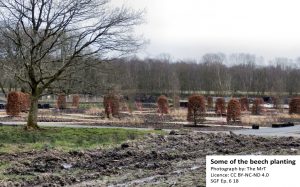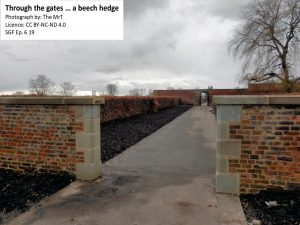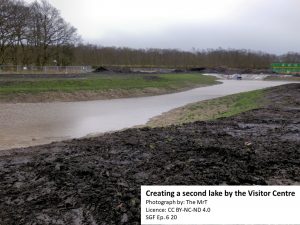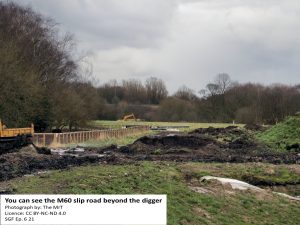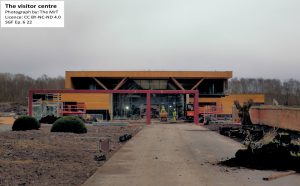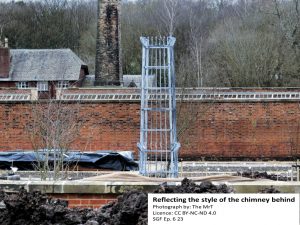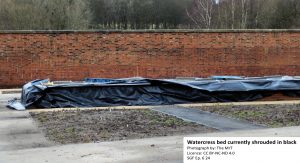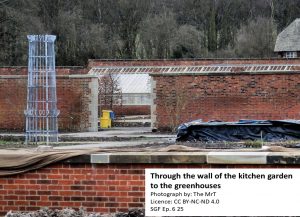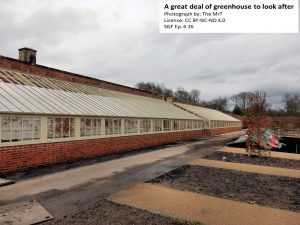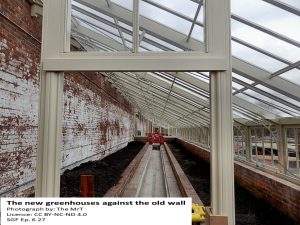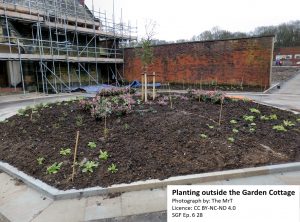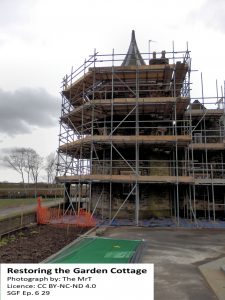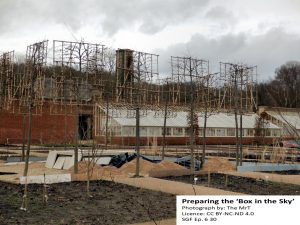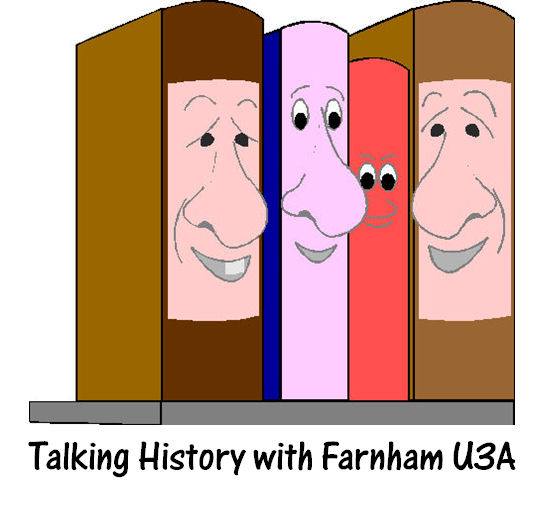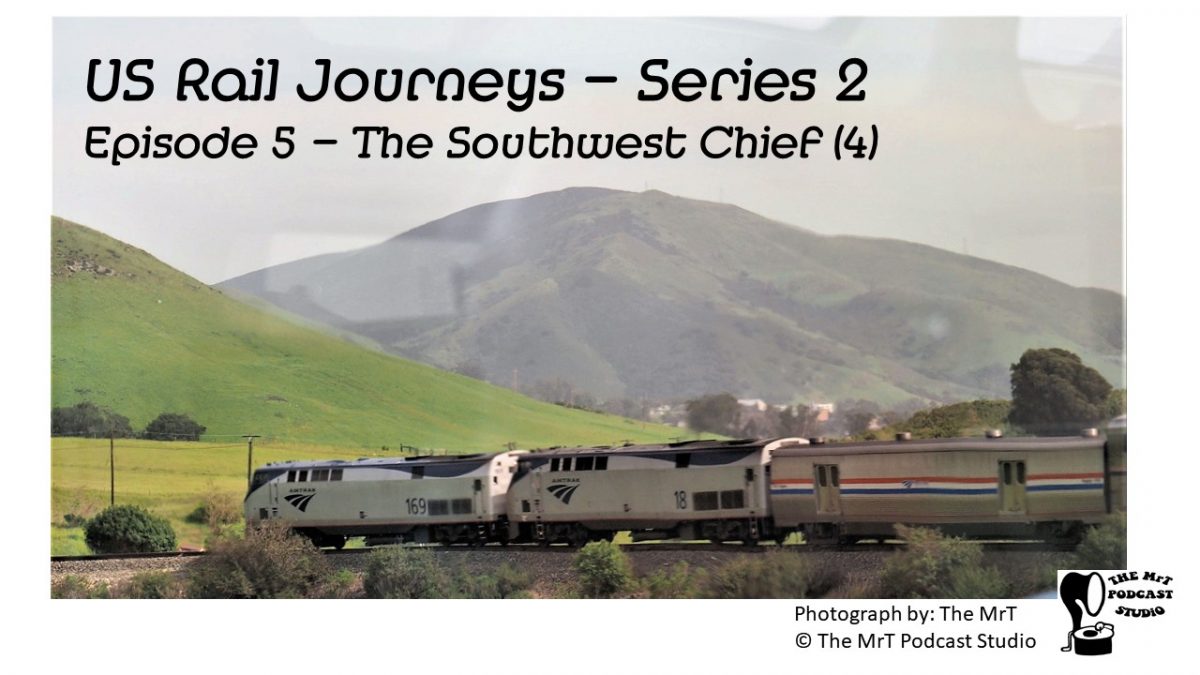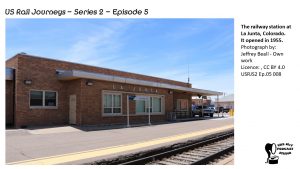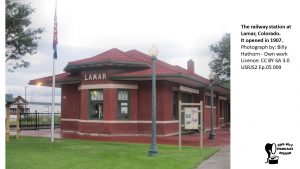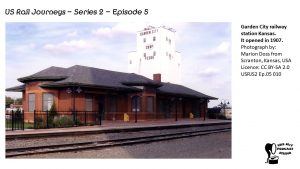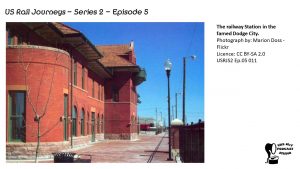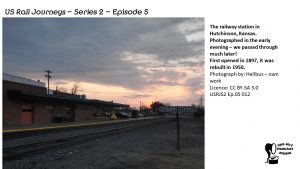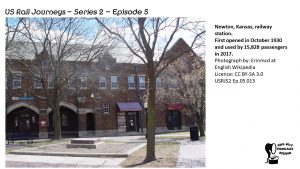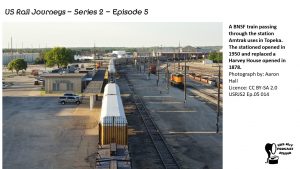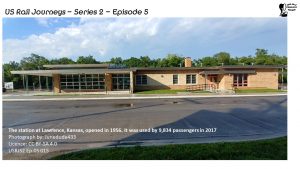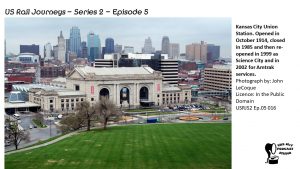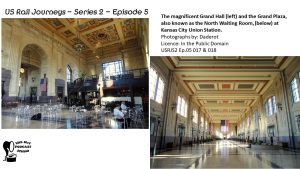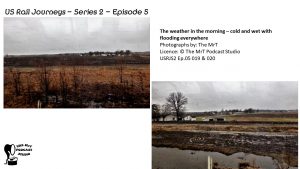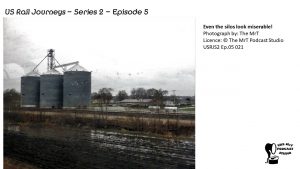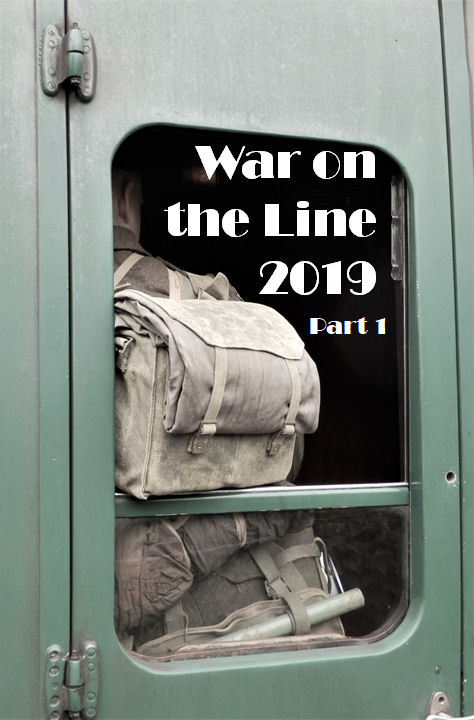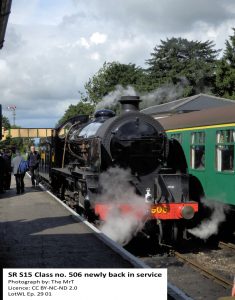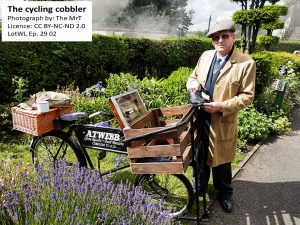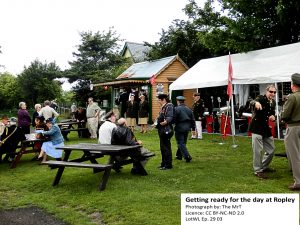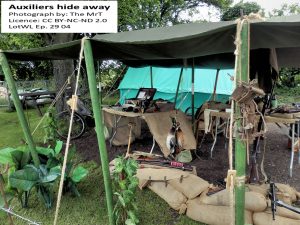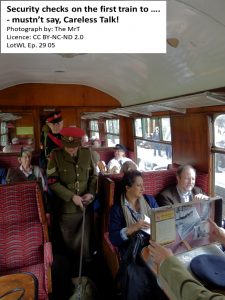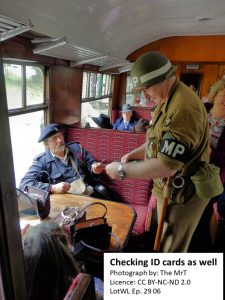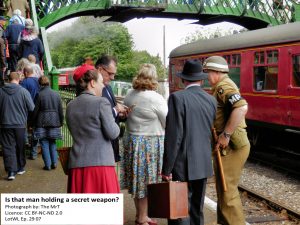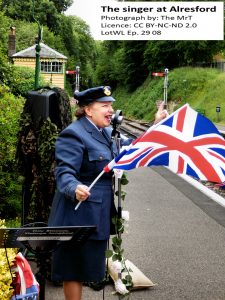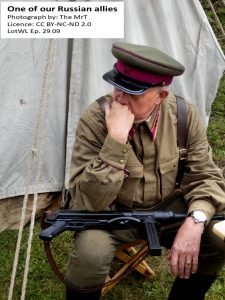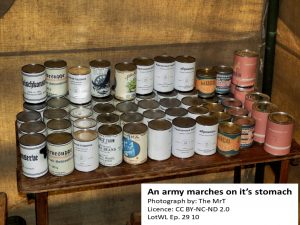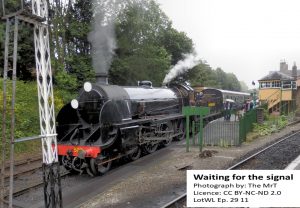Podcast: Play in new window | Download (Duration: 16:32 — 15.1MB)
The Southwest Chief part 5 – US Rail Journeys Series 2 Episode 6
From La Plata, Missouri to Princeton, Illinois
The Southwest Chief part 5 starts as we pass wet and muddy farms and cross flooded level crossings. As we approach La Plata in Missouri the train is still running late. This morning, sadly, there is no sun – just rain and flooding. The total journey is advertised as taking 40+ hours – click here for more details. Long distance passenger trains in the US often run late because freight trains take priority.
After leaving La Plata we pass flooded land where we can’t see where the river ends and land begins. There is an awful lot of floodwater here. Luckily another passenger is on hand to tell us why.
Fort Madison and the toll bridge:
We reach the station at Fort Madison and have a chance to stretch our legs. There is even floodwater in parts of the town as we go past. After two miles we reach the mile long Fort Madison toll bridge. The bridge takes us from Iowa to Illinois. The top layer of the bridge is for vehicles and the lower one for trains.
The bridge, used by 100 trains a day, was built in 1927. It swings open, up to 5 times a day, to let river traffic through – click here to see it open. The ‘swing’ section is 525 feet long (160 metres).
The Mississippi really is vast!
Onward into Illinois:
As we travel through Illinois the sky starts to lighten. Here and there a touch of blue and yellow. There is a short stop at Galesburg and then we continue on to Princeton.
If you’ve enjoyed this podcast. Please join me in two weeks for the next episode where I complete my journey to Chicago.
Please click on a thumbnail to open the gallery:
To visit the Amtrak website please follow this link.
You can also listen to this podcast on iTunes/Apple Podcasts, Deezer, Podchaser, Spotify and Stitcher.
![]()
Music:
AKM Music has licensed the theme, Steam Railway, for use in this podcast.
Audioblocks has licensed Country Train Ride by Michael Nicholas & Carl Carter for use as incidental music in this episode.
© The MrT Podcast Studio 2019 – 2020

